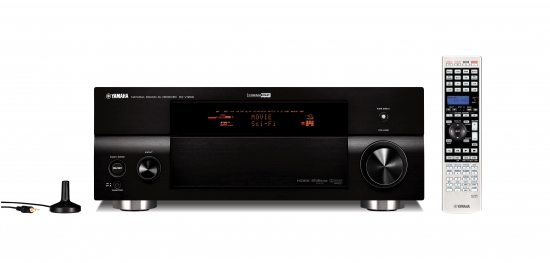Yamaha RX-V1900 AV-receiver
This is the first time when you see another Yamaha novelty, there is a state close to deja vu - wasn't it this model we tested a year ago? Put RX-V1900 and RX-V3800 next to each other and I'm sure you won't find even four differences. Yes, the lettering is different and there is a LAN socket for LAN on the rear panel. Even in the table everything matched except for the lines "power amplifiers" (the novelty produces "only" 130 W instead of 140) and "weight" (17.1 kg instead of 17.4). That's how one is tempted to copy the text from the last test and paste it here. But seriously, Yamaha's approach is probably the right one. The best that was made in the top models, in the next generation comes back in the technique of more accessible class - and mind you, it comes back in the original sense of the word, not in some economical, reduced or "improved" form. That's why the RX-V1900 looks unbeatable among direct competitors - in terms of features for sure. In fact, it's actually now backed by a model that's a notch higher. It has an extremely advanced switching section with outputs for three (!) zones, equipped with a powerful processor, which in addition to standard functions implemented two dozen original Yamaha sound processing modes Cinema DSP 3D, calibration system, YPAO, able to work not only in automatic but also in manual mode with parametric equalizer (if you want to achieve more accurate settings). In addition, YPAO is endowed with memory - calibrations can be saved in the form of presets, to improve them by switching one button or fix them for different listening positions.
Such a clever device demanded a complication of control algorithms and a large load on the remote control. The Spartan menus seemed to us a little too professional. Abundant with buttons, the remote control is not tame at once.
I don't take the liberty to say that RX-V1900 sounds like RX-V3800. It's a slippery question - sometimes two identical units of the same model are different. But I can definitely say the following: the dynamic qualities are not affected - the energy in the newcomer is plentiful. The sound is excellent not only at high volumes, but also at microdynamic level (such a combination of characteristics is rarely spoiled). The signature Yamaha handwriting, which some people like and others not so much, also did not go anywhere - the signature is strong, punchy, dense, with articulated midrange and dynamic low end. Yes, there is a slight transistor touch in the middle, and the bass seems flat sometimes, but that makes the sound even more material. In the upper band everything is clearly distinguishable, there is no veil. About the soundstage we cannot say that it is focused and echeloned with perfect precision, but you can feel the volume, it is filled with air, there is almost no binding to the speakers.
All the above referred to the operation of the receiver through the 7.1 input and in Pure Direct mode. But if you turn on Straight mode, there is a feeling of artificial purity - some nuances as if filtered by the path. A slightly cooler tone pattern plus a hint of a heavier bass is all the changes if you use coaxial or optical inputs. The sound coming through HDMI, on the other hand, is different. There is no technical defect in it, but the mood is different - some kind of excited, disheveled. Although, I must admit, some tracks only benefit from such an interpretation.
While listening to Yamaha RX-V1900 we were pleased with the pushy and resilient bass and slightly "bright" sound giving festivity to the songs. We recommend this device not only to blockbuster and modern electronic music lovers, but also to those who love to pore over the fine-tuning of the audio system.




